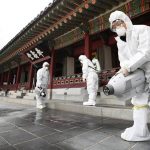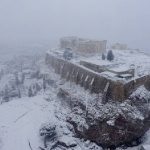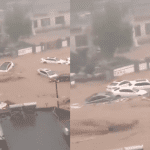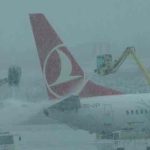The greatest snowfall in November in 117 years covered Seoul and the neighboring areas Wednesday, causing casualties, delaying traffic, and cutting off power supply, as authorities braced for further snow later this week.
According to the Korea Meteorological Administration (KMA), the capital city had gotten 18 centimeters of snow by 3 p.m., the most snowfall in November since modern weather measurements began in 1907.
The new record coincided with the first snow of the season in Seoul.
The previous record was 12.4 cm set on November 28, 1972, the state weather agency said.
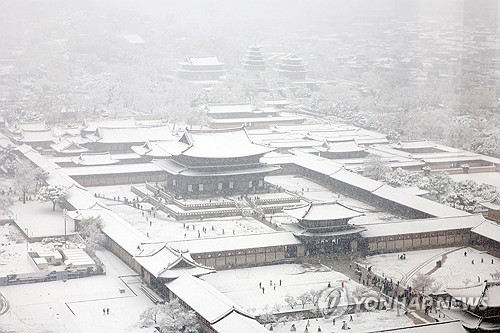
As of 3 pm, the city of Incheon, located west of Seoul, had recorded 14.8 cm of snowfall for November, surpassing the previous record of 8 cm established in 1972, according to Yonhap news agency.
The KMA reports that as of 3 pm, Suwon, south of Seoul, had gotten 21 cm of snow, the most ever for any November precipitation.
Rain and snow are expected across the country until Thursday morning, although in some areas of North Gyeongsang and Gangwon provinces, the precipitation will last into the afternoon. In the provinces of Chungcheong and Jeolla, as well as on Jeju Island, the precipitation is expected to last until late Friday night.
The interior ministry had upgraded the operations of the Central Disaster and Safety Countermeasures Headquarters to Level 2 and raised the heavy snow warning from “caution” to “alert.”
While standard measurements for the capital city are taken at the Seoul weather station in Jongno Ward, by district, Seongbuk Ward and Gangbuk Ward in the city’s north had received 20.6 cm and 20.4 cm of snow, respectively, as of 7 am Wednesday.

The KMA and the Seoul metropolitan government declared a heavy snow warning for the northeastern districts of Seoul, which include Nowon, Seongbuk, and Dobong. A warning is issued when snowfall reaches 20 cm within 24 hours.
A snow barrier outside a construction site fell in Songpa area of Seoul, injuring three people who were sent to neighboring hospitals. Police and fire officials said that one of them was seriously injured.
More than 170 households experienced a blackout in Seoul’s Seongbuk district at 5:30 am, as trees likely fell on telegraph poles and electric wires under the weight of heavy snow, according to the Korea Electric Power Corp.
Dozens of other households in Eunpyeong-gu also experienced interruptions to power supplies.
As of 6 pm, 150 flights had been canceled at airports nationwide due to the snow, including 71 flights at Incheon International Airport, west of Seoul, according to the Korea Airports Corp. and Incheon International Airport Corp.
The operation of 89 passenger ferries on 70 routes were halted nationwide, and entry to seven national parks, including those in Mount Bukhan and Mount Seorak, was restricted.
The disaster control tower also warned of traffic congestion during the morning and evening rush hours, pile-up accidents on icy roads and safety issues for pedestrians due to the heavy snow.
Interior Minister Lee Sang-min instructed officials to thoroughly conduct snow removal operations.
In collaboration with district governments and other pertinent organizations, the Seoul metropolitan government started clearing snow from subway station entrances and the areas surrounding bus stations at 7 a.m.
The city also extended intra-city bus service and subway service on Lines 2 and 5 through 8 by 30 minutes during morning and evening rush hours, when trains arrive at more frequent intervals.
Until Level 2 of the three-tier response structure is removed, the additional hours will remain in place.







